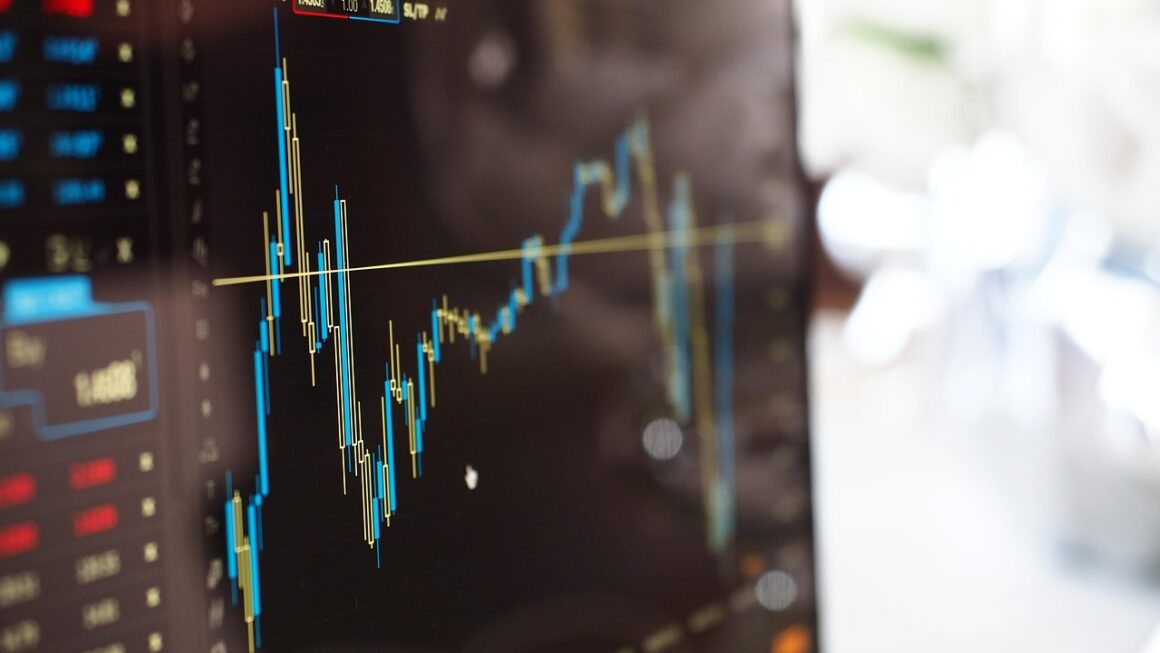Investing in gold has been a time-honored tradition, a hedge against economic uncertainty and a store of value recognized across cultures and throughout history. From ancient civilizations to modern financial markets, gold’s enduring appeal stems from its scarcity, inherent worth, and perceived stability. If you’re considering diversifying your investment portfolio or seeking a safe haven for your assets, exploring the world of gold investment is a worthwhile endeavor.
Understanding Gold as an Investment
Why Invest in Gold?
Gold’s allure as an investment stems from several key factors:
- Hedge Against Inflation: Historically, gold has maintained its value or even increased during periods of inflation, making it a useful tool for preserving purchasing power.
- Safe Haven Asset: In times of economic or political instability, investors often flock to gold as a safe haven, driving up demand and prices. Think of the 2008 financial crisis or the COVID-19 pandemic as examples.
- Diversification: Adding gold to your portfolio can reduce overall risk by providing a counterbalance to more volatile assets like stocks.
- Scarcity: Gold is a finite resource, and its limited supply contributes to its intrinsic value.
- Global Acceptance: Gold is universally recognized and accepted as a form of payment or store of value.
Gold’s Performance History
While gold is not immune to price fluctuations, it has generally performed well over the long term. Consider the following:
- In the 20th century, gold significantly outperformed other asset classes during periods of high inflation.
- From 2000 to 2010, gold prices rose dramatically, reflecting increased investor demand during economic uncertainty.
- While past performance is not indicative of future results, analyzing historical trends can provide insights into gold’s potential role in your portfolio.
- Example: During periods of quantitative easing by central banks, gold prices often experience upward pressure due to concerns about currency devaluation.
Different Ways to Invest in Gold
Physical Gold
- Gold Bullion (Bars and Coins): This involves purchasing gold bars or coins directly. Bars are typically available in various sizes, from small 1-gram bars to larger 1-kilogram bars. Coins often have numismatic value in addition to their gold content.
Pros: Direct ownership, tangible asset.
Cons: Storage costs, security risks, potential for counterfeiting.
Actionable Takeaway: If buying physical gold, research reputable dealers and consider secure storage options like a safe deposit box.
- Gold Jewelry: While aesthetically pleasing, gold jewelry is generally not the most efficient way to invest in gold due to the markup involved in craftsmanship and retail. The gold content (karat) will also determine its pure gold value.
Pros: Wearable asset.
Cons: High markup, lower pure gold content, less liquid.
Indirect Gold Investments
- Gold ETFs (Exchange-Traded Funds): These funds track the price of gold and allow investors to buy and sell shares on a stock exchange. They typically hold physical gold in vaults.
Pros: Liquidity, ease of trading, lower storage costs.
Cons: Management fees, not direct ownership of physical gold.
Example: GLD and IAU are two popular gold ETFs.
- Gold Mining Stocks: Investing in companies that mine gold can provide exposure to the gold market. However, these stocks are also subject to the risks associated with individual companies and the mining industry.
Pros: Potential for higher returns than gold itself, exposure to the mining industry.
Cons: Higher volatility, company-specific risks.
Actionable Takeaway: Research gold mining companies thoroughly before investing, considering factors like production costs, reserves, and management quality.
- Gold Futures Contracts: These contracts obligate the holder to buy or sell gold at a predetermined price and date in the future. Futures are a more complex investment suitable for experienced traders.
Pros: Leverage, potential for high returns.
Cons: High risk, requires expertise.
Factors Influencing Gold Prices
Economic Conditions
- Inflation: As mentioned earlier, rising inflation often leads to increased demand for gold as a hedge.
- Interest Rates: Higher interest rates can make gold less attractive as an investment, as investors may prefer interest-bearing assets.
- Currency Fluctuations: A weaker U.S. dollar (the currency in which gold is typically priced) can make gold more attractive to foreign buyers.
- Economic Growth: During periods of strong economic growth, investors may shift away from gold towards riskier assets like stocks.
Geopolitical Events
- Political Instability: Wars, conflicts, and political uncertainty can drive up demand for gold as a safe haven.
- Trade Wars: Trade disputes and tariffs can create economic uncertainty, leading investors to seek the safety of gold.
Supply and Demand
- Mining Production: The amount of gold being mined each year can affect supply and prices.
- Central Bank Activity: Central banks are significant holders of gold reserves, and their buying or selling activity can influence prices.
- Jewelry Demand: Demand for gold jewelry, particularly in countries like India and China, can impact overall demand.
- *Example: If a major gold mine experiences a significant production disruption due to political instability, the price of gold may increase.
Building a Gold Investment Strategy
Determine Your Investment Goals
- Are you looking for a long-term store of value or a short-term trading opportunity?
- What percentage of your portfolio do you want to allocate to gold? A common recommendation is 5-10%.
- What is your risk tolerance?
Choose the Right Investment Vehicle
- Consider your investment goals, risk tolerance, and available capital.
- Physical gold may be suitable for long-term investors seeking direct ownership.
- Gold ETFs are a good option for those seeking liquidity and ease of trading.
- Gold mining stocks may be appropriate for investors willing to accept higher risk for potentially higher returns.
Dollar-Cost Averaging
- Consider using dollar-cost averaging, which involves investing a fixed amount of money in gold at regular intervals, regardless of the price. This can help reduce the risk of buying at a peak.
Stay Informed
- Keep up to date with economic news, geopolitical events, and trends in the gold market.
- Consult with a financial advisor to develop a personalized gold investment strategy.
Conclusion
Investing in gold can be a valuable addition to a well-diversified portfolio. However, it’s crucial to understand the different ways to invest in gold, the factors that influence gold prices, and your own investment goals and risk tolerance. By carefully considering these factors and developing a sound investment strategy, you can potentially benefit from gold’s enduring appeal as a store of value and a hedge against economic uncertainty. Remember to conduct thorough research, consult with financial professionals, and proceed with caution.




